Understanding the Power of FET Transistors: A Comprehensive Guide
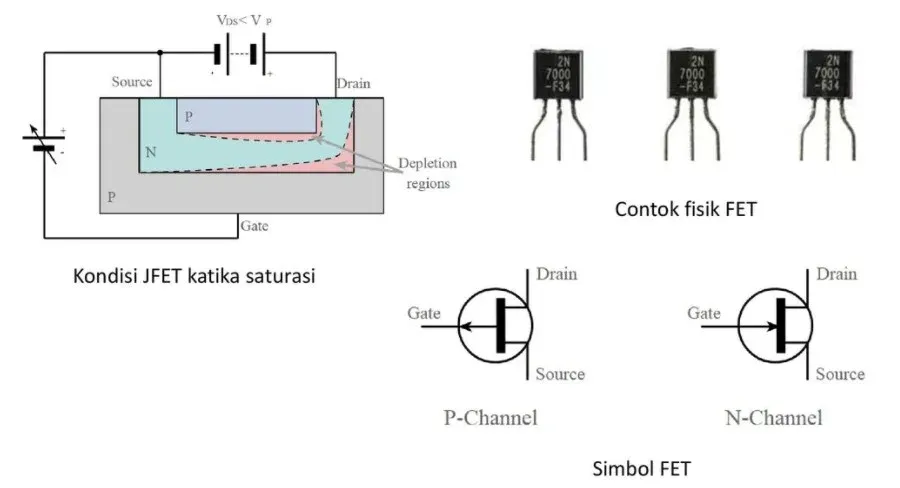
In our daily lives, from smartphones to advanced medical equipment, electronic components are indispensable. Among them, the FET transistor, or Field Effect Transistor, plays a crucial role. This article will dive deep into the workings of FET transistors, offering a clear understanding of their importance and applications. We'll cover everything from their basic function to their various types and uses, demystifying this fundamental piece of technology.
The Fundamentals of FET Transistors

Field-Effect Transistors (FETs) are a cornerstone of modern electronics, acting as voltage-controlled switches or amplifiers. At their core, FETs leverage an electric field to modulate current flow between two terminals—the source and the drain—a mechanism distinctly different from current-controlled devices like bipolar junction transistors (BJTs).
The operation of a FET is governed by three key terminals: the source, which serves as the origin of charge carriers; the drain, where these charge carriers exit the device; and the gate, which is used to apply an electric field. This electric field, controlled by the voltage applied to the gate, alters the conductivity of the channel between the source and drain. The absence of current flow into the gate makes FETs ideal for high impedance applications.
How FET Transistors Function: The Electric Field at Play
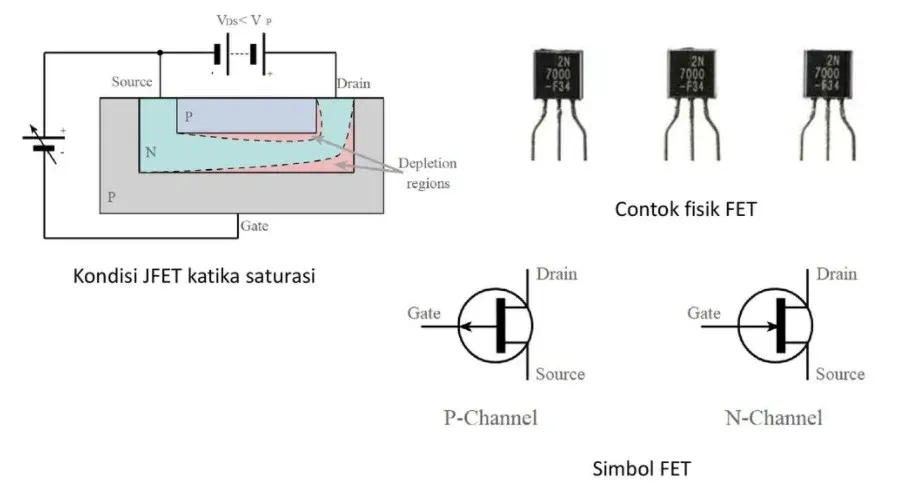
Field-Effect Transistors (FETs) leverage an electric field to modulate current flow, offering a distinct control mechanism compared to traditional bipolar junction transistors (BJTs). The core principle lies in the gate terminal's ability to influence the conductivity of a channel between the source and drain terminals. By applying a voltage to the gate, the electric field either enhances or depletes the charge carriers in this channel, thereby controlling the current that can pass through the transistor. This field-based control makes FETs highly efficient and versatile for various electronic applications.
The operation of a FET revolves around the electric field's effect on a semiconductor channel. When a voltage is applied to the gate terminal, it creates an electric field that penetrates into the channel. This electric field can either attract or repel charge carriers (electrons or holes) depending on the type of FET and the polarity of the applied gate voltage. The modulation of charge carriers directly affects the channel's conductivity, thus controlling the current flow between the source and drain.
Unlike BJTs, which rely on current injection to control output current, FETs use a voltage to create an electric field, allowing for higher input impedance. This distinction is crucial in many circuit applications, as it reduces the load on the driving circuit and leads to more efficient signal processing. This voltage-controlled nature of FETs results in less power consumption and higher switching speeds compared to current-controlled BJTs, making them a preferred choice in many electronic designs.
Types of FET Transistors: JFETs and MOSFETs
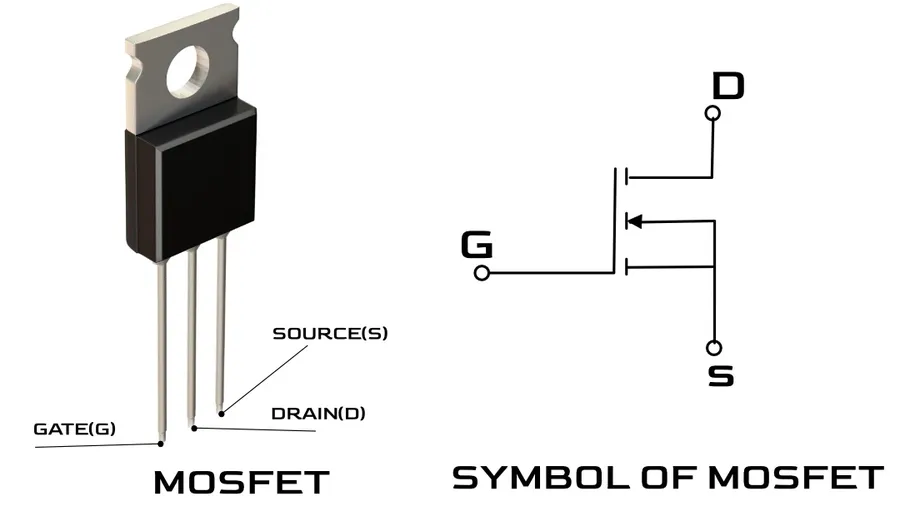
Field-Effect Transistors (FETs) are broadly categorized into two primary types: Junction Field-Effect Transistors (JFETs) and Metal-Oxide-Semiconductor Field-Effect Transistors (MOSFETs). These differ significantly in their structure, operational characteristics, and typical applications. Both JFETs and MOSFETs utilize an electric field to control current flow, but they achieve this control through different physical mechanisms.
| Feature | JFET | MOSFET |
|---|---|---|
| Structure | Semiconductor junction forms the gate | Metal-Oxide-Semiconductor structure forms the gate |
| Gate Isolation | Reverse biased p-n junction | Insulating layer (oxide) separates gate from channel |
| Input Impedance | High, but lower than MOSFET | Extremely high due to gate insulation |
| Control Mechanism | Varying the depletion region width to modulate channel conductivity | Accumulating or depleting charge carriers in channel via the gate voltage |
| Typical Applications | Amplifiers, analog switches | Digital logic, power switching, memory |
| Polarity | Typically operates with a reverse biased gate-source junction | Operates with a gate voltage controlling a conductive channel |
JFETs, characterized by their junction gate, are typically used in analog circuits, such as amplifiers, due to their linear characteristics and low noise. MOSFETs, with their insulated gate, are favored in digital logic and power electronics due to their high input impedance and versatile operating modes.
MOSFET Variations: Enhancement and Depletion Modes
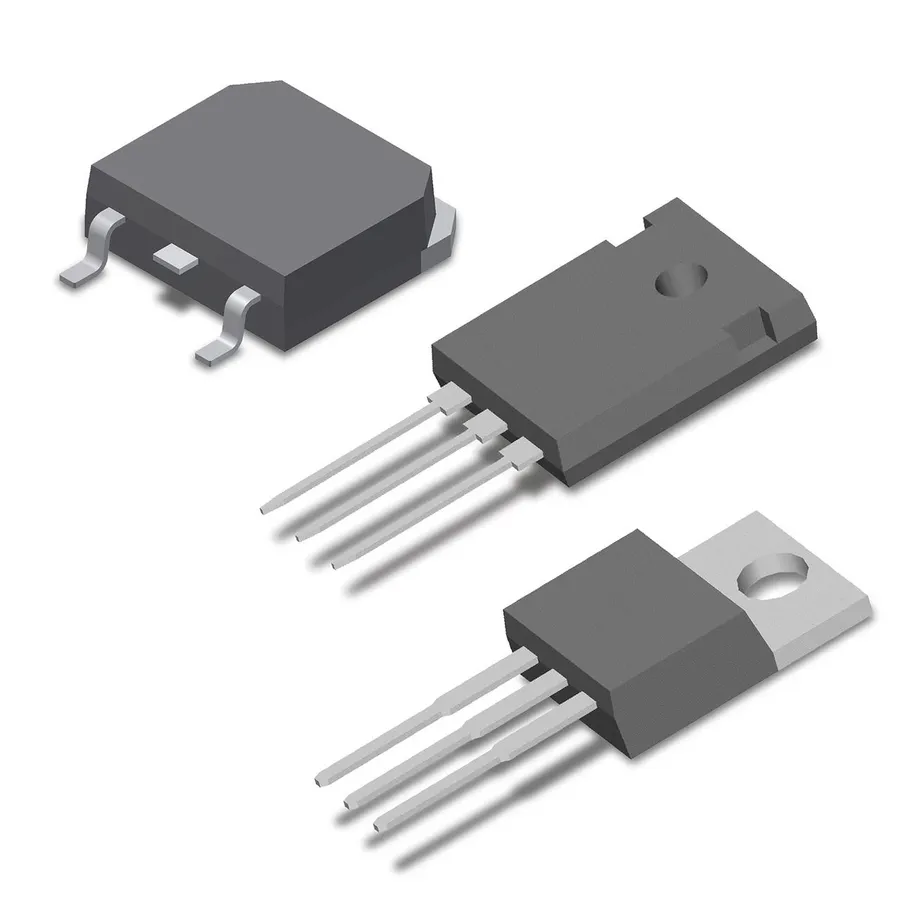
Metal-Oxide-Semiconductor Field-Effect Transistors (MOSFETs), a dominant force in modern electronics, come in two primary flavors: enhancement-mode and depletion-mode. These modes dictate how the gate voltage influences the channel's conductivity, leading to different operational characteristics and application suitability. Understanding these distinctions is crucial for effective circuit design.
| Feature | Enhancement-Mode MOSFET | Depletion-Mode MOSFET |
|---|---|---|
| Channel at Vgs=0 | Non-conducting | Conducting |
| Gate Voltage to conduct | Requires positive Vgs (N-Channel), negative Vgs(P-Channel) | Requires negative Vgs (N-Channel), positive Vgs(P-Channel) to reduce conduction. |
| Typical application | Switching and amplification | Load device, analog switches |
| Symbol | Discontinuous Channel line | Solid Channel line |
| Conduction behavior | Normally OFF (No current flow at Vgs=0) | Normally ON (Current flow at Vgs=0) |
Enhancement-mode MOSFETs are the more commonly used type, acting like a normally-off switch. When no voltage is applied to the gate (Vgs=0), there is no channel to conduct current between the source and drain. The channel is created or enhanced by applying a voltage to the gate terminal. Depletion-mode MOSFETs, on the other hand, operate as normally-on devices. They have a built-in channel that allows current flow even when no voltage is applied to the gate. To turn them off or reduce current flow, a gate voltage must be applied to deplete the channel of charge carriers. Both types are pivotal, with the selection based on circuit requirements.
The selection between enhancement and depletion mode MOSFETs is primarily application-driven. Enhancement MOSFETS are ideal for switching applications and power electronics where they need to be turned on and off, for instance, a high-side switch where the load is connected to the positive supply. Depletion MOSFETs, by contrast, are most often found in analog circuits to make current sources, where they function as the active load, or in applications that require a normally-on switch, like a fail-safe system.
Key Characteristics of FET Transistors
Understanding the key electrical characteristics of Field-Effect Transistors (FETs) is crucial for effective circuit design and application. These characteristics dictate how a FET will behave within a circuit and include parameters like input impedance, transconductance, and switching speed. Each of these parameters influences the performance of the circuit and is a critical element to consider during the design process.
| Characteristic | Description | Impact on Circuit Performance |
|---|---|---|
| Input Impedance | The resistance seen by the input signal source. FETs have very high input impedance. | Minimizes loading on the signal source, allowing for efficient signal transfer with minimal signal loss. This is especially beneficial in amplifier circuits and high-frequency applications. |
| Transconductance (gm) | The ratio of change in drain current to the change in gate-source voltage. Expressed in Siemens (S). | Determines the gain of the amplifier. A higher transconductance value leads to greater amplification. It is a crucial factor in determining the signal amplification and output strength of the circuit. |
| Switching Speed | The speed at which a FET can transition between the on and off states, dependent on the intrinsic capacitances. | Determines how quickly the FET can respond to changes in gate voltage. Faster switching speeds are necessary for high-frequency and high-speed digital applications, while low switching speeds are adequate for less demanding applications. It is particularly crucial in pulse width modulation (PWM) circuits and fast-switching power applications |
| Drain Resistance (rd) | The resistance between the drain and source terminals when the FET is in its active region. | Affects the output impedance of the circuit and influences the overall gain and efficiency. Lower drain resistance results in a lower output impedance. This allows the circuit to deliver more power to the load efficiently |
| Output Impedance | The resistance seen at the output terminal. | Affects how well the circuit can drive a load. A low output impedance is desirable for effective power transfer. |
FET Transistor Applications Across Industries
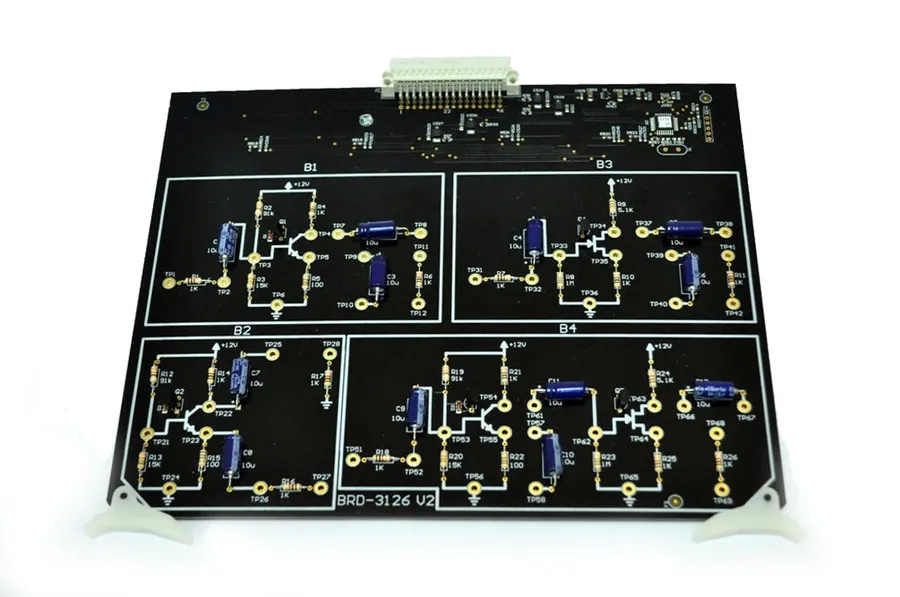
Field-Effect Transistors (FETs) are foundational components in modern electronics, enabling a wide array of applications across diverse industries. Their ability to control current with an electric field, coupled with their high input impedance, makes them ideal for both amplification and switching functions. This section explores the specific uses of FETs in key sectors, highlighting their versatility and impact.
- Amplifiers
FETs are commonly used in amplifier circuits due to their high input impedance, which minimizes loading effects on the signal source. They are employed in audio amplifiers, radio frequency (RF) amplifiers, and operational amplifiers (op-amps), contributing to signal amplification with minimal distortion. Examples include low-noise amplifiers (LNAs) in communication systems and power amplifiers in audio equipment. - Switching Circuits
FETs, especially MOSFETs, are ubiquitous in digital circuits as electronic switches. Their ability to rapidly switch between 'on' and 'off' states with low power consumption makes them essential in microprocessors, memory chips, and other digital logic applications. Power MOSFETs are used extensively in power converters and motor drives for efficient control of electrical power. - Power Management
FETs play a crucial role in power management systems due to their efficient switching capabilities and low on-resistance. They are utilized in voltage regulators, DC-DC converters, and battery chargers, where they ensure power delivery with minimal loss. For instance, switching regulators in portable devices often use MOSFETs to control power delivery to various system components. - Digital Logic Circuits
In digital electronics, MOSFETs are the building blocks of logic gates, such as AND, OR, and NOT gates. These gates form the foundation of all digital integrated circuits, including microprocessors, memory devices, and digital signal processors (DSPs). Complementary Metal-Oxide-Semiconductor (CMOS) technology, based on MOSFETs, is the dominant approach for creating complex digital circuits. - Sensors and Actuators
FETs also find use in sensor interfaces and actuation systems. Their sensitivity to changes in the electric field or current allows for use in sensors for measuring temperature, pressure, and light, with further applications in driving actuators with precision. For example, ion-sensitive FETs (ISFETs) are used in chemical and biological sensors.
| Application | Industry Example | FET Type | Key Function |
|---|---|---|---|
| Audio Amplification | Home Stereo Systems, Musical Instruments | JFET, MOSFET | Signal amplification with high impedance |
| Switching Power Supplies | Laptop Adapters, Server Power Systems | MOSFET | Efficient power conversion |
| Microprocessors | Computers, Smartphones, Embedded Systems | MOSFET | Logic switching, high speed operation |
| Battery Chargers | Electric Vehicles, Power Tools | Power MOSFET | Switching current to charge batteries |
| Sensor Interfaces | Medical Equipment, Industrial Controls | ISFET, JFET | Detection and transduction of environmental conditions |
Advantages and Limitations of FET Transistors
Field-Effect Transistors (FETs) offer significant advantages in electronic circuit design, notably their high input impedance and low power consumption, which stem from their unique mode of operation. However, these advantages are balanced by certain limitations, particularly their susceptibility to electrostatic discharge (ESD) and, in some cases, lower transconductance compared to bipolar junction transistors (BJTs).
| Characteristic | FET Transistors | Bipolar Junction Transistors (BJTs) |
|---|---|---|
| Input Impedance | High (Megohms) | Low (kOhms) |
| Power Consumption | Low | Moderate to High |
| Current Control | Voltage Controlled | Current Controlled |
| Transconductance | Moderate to High (depending on type) | High |
| Susceptibility to ESD | High | Low |
| Switching Speed | Fast | Fast |
| Temperature Stability | Good | Moderate |
The high input impedance of FETs minimizes loading effects on preceding stages in a circuit, which means they require very little current to drive. This characteristic is crucial in applications where signal integrity is vital, such as high-frequency amplifiers. In contrast, the current-controlled nature of BJTs results in lower input impedances and higher power consumption, especially at higher frequencies. The transconductance in FETs, while often lower than BJTs, is typically sufficient for most applications and offers very high gain in certain modes. While FETs have many advantages, electrostatic discharge poses a problem, which is why they require careful handling. BJTs tend to be more robust in this area.
Frequently Asked Questions About FET Transistors
This section addresses common queries regarding Field-Effect Transistors (FETs), providing clarity on their distinctions, advantages, and applications. Understanding these frequently asked questions is crucial for both newcomers and seasoned professionals in electronics.
- What is the fundamental function of a FET transistor?
A FET transistor acts as a voltage-controlled switch or amplifier. It modulates the current flow between its source and drain terminals by applying an electric field to its gate terminal. This contrasts with current-controlled devices like BJTs. - What distinguishes a FET from a MOSFET?
While a MOSFET (Metal-Oxide-Semiconductor Field-Effect Transistor) is a type of FET, the key difference lies in the gate structure. MOSFETs have a gate terminal insulated by a thin layer of oxide, providing extremely high input impedance. FET is a broader term that includes JFETs, which use a p-n junction for the gate instead of an oxide layer. - In what scenarios are FETs preferred over BJTs?
FETs are often preferred in scenarios requiring high input impedance, low power consumption, and high switching speeds. Their voltage-controlled nature also simplifies biasing and circuit design in certain applications. FETs are also less temperature sensitive than BJTs, making them suitable for high temperature environments. - What advantages do FETs offer in circuit design?
FETs offer several advantages, including high input impedance, which minimizes loading effects on preceding stages; lower power consumption, due to the gate drawing minimal current; higher switching speed, making them suitable for fast digital circuits; and less temperature sensitivity compared to BJTs - How are FETs used in amplifier circuits?
In amplifier circuits, FETs are used for their high input impedance, which ensures that the amplifier does not load the source signal significantly. They are also used for their low noise and high gain capabilities. Both JFETs and MOSFETs can be configured in various amplifier topologies (common source, common drain, and common gate) to meet the specific amplification needs of a circuit. - What are some typical applications of FETs in modern electronics?
FETs are widely used in modern electronics due to their versatility. They are crucial in power management circuits in smartphones and laptops, digital logic gates in microprocessors, and signal amplification in communication systems. Furthermore, they act as high-speed switches in memory devices and are essential in sensor interfaces where signal fidelity and low current operation are required.
Future Trends in FET Transistor Technology
The field of FET transistor technology is in constant evolution, driven by the demand for faster, smaller, and more energy-efficient electronic devices. Current research and development efforts are focused on novel materials, advanced fabrication techniques, and innovative device architectures to overcome the limitations of traditional silicon-based FETs.
Here we delve into some of the most promising trends shaping the future of FET technology:
- Novel Materials
Beyond silicon, new materials like graphene, molybdenum disulfide (MoS2), and other 2D materials are being explored for their superior electrical properties. These materials can enable higher electron mobility and lower power consumption, paving the way for faster and more efficient transistors. For example, graphene's high electron mobility offers potential for ultra-high-speed devices. - Advanced Fabrication Techniques
As devices shrink, traditional fabrication techniques reach their limits. New methods such as atomic layer deposition (ALD) and extreme ultraviolet (EUV) lithography are critical for creating devices with nanometer-scale precision. These techniques allow for the creation of more complex and intricate transistor structures, improving device density and performance. - 3D Transistor Architectures
To overcome the limitations of planar designs, 3D transistor structures like FinFETs and Gate-All-Around (GAA) FETs are becoming increasingly prevalent. These architectures offer better gate control and higher current drive, leading to improved performance and reduced power leakage. GAA FETs, for instance, completely surround the channel with the gate, maximizing control. - Spintronics and Quantum Computing
Emerging areas such as spintronics and quantum computing are driving the need for new types of FETs. Spintronic devices utilize the spin of electrons, rather than charge, for information processing, while quantum FETs could offer capabilities beyond the reach of classical devices. These advancements hold the potential to revolutionize computation and information storage. - Power Electronics Innovations
The demand for efficient power management is pushing the development of FETs optimized for high-power applications. Wide-bandgap materials like gallium nitride (GaN) and silicon carbide (SiC) are becoming important in high-power FETs because they enable higher operating voltages, higher operating temperatures, and lower energy loss compared to traditional silicon FETs.
The relentless pursuit of miniaturization, coupled with the exploration of novel materials and device architectures, ensures that FET transistor technology will remain at the forefront of technological innovation. These trends are expected to shape the next generation of electronics, enabling more powerful, energy-efficient, and versatile devices for a wide range of applications.
FET transistors are indispensable components that have revolutionized the field of electronics. Their ability to control current flow through an electric field makes them incredibly versatile and efficient. From the simplest circuits to the most advanced technologies, the FET transistor remains at the heart of modern electronics, paving the way for innovation. Understanding their principles and applications is essential for anyone looking to grasp the nuances of electronic engineering. As technology evolves, the FET transistor will continue to be a critical element in the future of electronic devices, demonstrating the lasting impact of this invention.
 AnyPCBA
AnyPCBA